The animals of the Stone Age: list with pictures and facts.
Animals Of The Stone Age
Animals of the Stone Age include the cave bear, dire wolf, Glyptodon, marsupial lion, Mastodon, Smilodon and the woolly mammoth. Stone Age animals co-existed with early humans and their ancestors, who by the end of the Stone Age had spread across Eurasia and into The Americas.
- You can find out more about these and other animals of the Stone Age in the list below.
What Is The Stone Age?
The Stone Age is a period in history during which humans and their ancestors made and used stone tools. It began around 3.3 million years ago and ended between 5,000 and 2,000 years ago, depending on location (stone tool use began and ended at different times in different parts of the world).
Much of the Stone Age is included in the Pleistocene epoch, a time in the geologic time scale that began 2.58 million years ago and ended 11,700 years ago.
Towards the end of the Stone Age, humans switched from being hunter gatherers to farmers. The Stone Age finally came to a close when the use of metal (particularly bronze) became widespread.
Glacial Cycles
The climate of the Pleistocene epoch was dominated by glacial cycles. During glacial periods, much of the planet’s northern and southern hemispheres were covered by ice sheets. These glacial periods were interspersed with warmer periods known as interglacials, during which the ice sheets would retreat.
The Ice Age
The last glacial period began 115,000 years ago and ended around 11,700 years ago. It is known as the Ice Age, although the name can also refer to the whole Pleistocene Epoch.
Extinction Of Stone Age Animals
The animals in this list of Stone Age animals are all known or believed to have existed alongside humans and their ancestors.
Hunting by humans is one of the two main causes of extinction of stone-age animals, the other being a warming of Earth’s climate that followed the end of the last glacial period, which occurred around 11,700 years ago.
Many animals of the Stone Age had evolved to live in cold climates and were unable to survive the lengthy interglacial period that followed the end of the Ice Age.
List Of Animals Of The Stone Age
Castoroides (Giant Beaver)
- Where found: North America
Castoroides, also known as the giant beaver, was a bear-sized member of the beaver family Castoridae. It appeared in the late Pliocene and lived through most of the Pleistocene. Two species of giant beaver have been identified.
The largest giant beavers grew to around 2.5 m / 8.2 ft in body length. The incisor teeth of Castoroides were much longer than those of modern beavers, reaching around 6 in. / 15 cm in length. Its tail was also longer and thinner.
The giant beaver is thought to have had the same, largely aquatic, lifestyle of living beavers.
Cave Bear
- Where found: Europe, Asia
The cave bear was a stone age relative of living brown bears, and a member of the bear family, Ursidae. Its scientific name is Ursus spelaeus. With a body length of up to 3 m / (9 ft 10 in), the cave bear was a similar size to the polar bear, the largest of the living bears. It was found in Europe and Asia.
Cave bear fossils have been found in caves, suggesting that the species lived and hibernated in caves (which is how the species got its name). The size and structure of its teeth suggests that its diet was mainly herbivorous.
Deinotherium
- Where found: Europe, Asia, Africa
Deinotherium was a stone-age relative of today’s elephants. Unlike todays’ elephants, however, its tusks extended from the lower, rather than the upper jaw, and curved downwards. They were probably used to pull branches off of trees, or to dig in the ground for food.
Standing over 4 m / 13.12 ft. tall, and weighing an estimated 14 tonnes / 15.43 short tons, the largest Deinotherium was larger than the African elephant – the largest living land animal.
Dire Wolf
Scientific name: Aenocyon dirus
- Where found: The Americas, Asia
The dire wolf is one of the best-known stone-age animals. It appeared in the Late Pleistocene, and lived up to around 9,500 years ago.
Although a similar size to today’s gray wolf, the dire wolf was slightly heavier, suggesting a stockier body.
The dire wolf’s teeth were larger than those of today’s wolves, and its bite force more powerful than that of any living canid. These may have been adaptations for a hyena-like scavenging lifestyle, but are likely simply have been requirements for taking down large stone-age animals such as mastodons and ground sloths.
The dire wolf is one of many stone age animals to have been found at the La Brea Tar Pits, a fossil hotspot in Los Angeles, USA.
- You can find out more about the dire wolf on this page: Dire Wolf Facts
Elephant Bird
- Where found: Madagascar
The elephant birds were a family (Aepyornithidae) of flightless birds found in the African Island country of Madagascar. They belong to a group of birds known as “ratites”, which includes living birds such as ostriches and cassowaries.
Elephant birds are thought to have appeared in the Oligocene epoch, and existed until the 17th century.
Glyptodon
- Where found: South America
Glyptodon was a 2.5 m / 8.2 ft. long, stone-age relative of today’s armadillos. The size of a small car, Glyptodon was protected by a rounded, armored shell. Its tail, too, was heavily armored. It belonged to the mammalian group Xenarthra, which contains today’s anteaters, sloths and armadillos.
Glyptodon was herbivorous. Its extinction may have been caused by overhunting by stone-age humans.
Mammoth
- Where found: Europe, The Americas, Asia, Africa
Mammoths were a group of mammals in the elephant family that first appeared early in the Pliocene epoch, before the beginning of the Stone Age. Around 10 mammoth species have been identified. They make up the genus Mammuthus.
Mammoths first appeared in Africa, then spread across Europe and Asia before entering North America.
The best-known mammoth is the woolly mammoth Mammuthus primigenius. This species was a similar size to today’s African bush elephant. It had several adaptations for living in the cold, including its characteristic fur, and small ears for protection against frostbite.
The last woolly mammoths lived on Wrangel Island, a Russian island in the Arctic Ocean. They were still alive at the time of the building of the Great Pyramid in Egypt.
- You can find out more about the woolly mammoth on this page: Woolly Mammoth Facts
Marsupial Lion
- Where found: Australia
Thylacoleo carnifex was a stone age marsupial that lived in Australia. It is the largest of three species of genus Thylacoleo, a group of animals known as the marsupial lions due to similarities in both their appearance and lifestyle to those of today’s lions.
Thylacoleo carnifex was a fearsome animal, the size of a jaguar, with strong fore limbs, retractable claws, and an immensely strong bite force.
A rock painting made by Aboriginal Australians features an animal that may be a marsupial lion with a striped coat and pointed ears. Another rock painting depicts a possible marsupial lion and a man holding a spear. These paintings provide evidence not only of what the marsupial lion looked like, but also that it and humans had a degree of interaction.
Mastodon
- Where found: The Americas
Mastodons were Stone Age relatives of today’s elephants. The five currently recognized species of mastodon belong to the genus Mammut and family Mammutidae. They were found in North America, and were less-closely related to living elephants than mammoths.
Smaller than mammoths, but powerfully-built and equipped with long tusks, mastodons were herbivores that inhabited forests.
Hunting of mastodons by stone age humans may have caused their extinction at the end of the Pleistocene epoch.
Irish Elk
- Where found: Europe, Asia
The Irish elk Megaloceros giganteus was a large member of the deer family Cervidae. It was one of several species of the now-extinct genus Megaloceros. This stone age species was found across northern Europe and into Siberia. It was a similar size to today’s moose and its antlers were larger than those of any other known deer.
Depictions of the Irish elk in cave paintings show it with pale fur, and a dark stripe running along its back and each of its sides.
Megatherium
- Where found: South America
Megatherium was a giant ground sloth that lived in South America. It belonged to the same group, Xenarthra, that contains living sloths, anteaters and armadillos, and extinct animals such as Glyptodon, also included in this list of stone-age animals.
Megatherium Americanum, the largest species of Megatherium, grew to lengths of up to 6 m / 20 ft., and would have weighed up to 4 tonnes / 4.41 short tons.
Unlike living sloths, Megatherium didn’t climb trees; it would simply have pulled branches towards its mouth with its powerful arms. Although Megatherium is often depicted with hair, some paleontologists think that it would have been hairless, like an elephant, to prevent overheating.
Sivatherium
- Where found: The Americas
Sivatherium is a genus of extinct animals in the giraffe family Giraffidae. It was found in both Africa and Asia and appeared several millions of years before the beginning of the stone age. It is thought to have become extinct around 800,000 years ago.
Sivatherium resembled a modern okapi, but was significantly larger. It had two pairs of horn-like growths known as ossicones on its head. One pair was large and resembled antlers.
Smilodon
- Where found: The Americas
One of the most famous stone age animals, Smilodon was a saber-toothed cat found in the Americas in the Pleistocene and early Holocene. Smilodon populator, a Smilodon species found in South America, may have been the largest ever member of the cat family Felidae ever to have lived.
Smilodon is also known as the saber-toothed tiger, although it is not closely-related to today's tiger.
The most distinctive feature of Smilodon was the pair of canine teeth that projected out of its mouth from the upper jaw. The canine teeth of Smilodon populator were 28 cm / 11 in length.
Smilodon hunted animals larger than itself, bringing them down with its powerful limbs and claws before delivering a death bite with its long canines.
- You can find out more about Smilodon on this page: Smilodon Facts
Toxodon
- Where found: South America
Toxodon was a hippopotamus-like hoofed mammal that lived in South America. It was powerfully-built, with short legs and a barrel-shaped body It would have co-existed with early human settlers for several thousands of years before becoming extinct, possibly due to hunting by humans. Several specimens have been found with arrowheads embedded in them.
Woolly Rhinoceros
- Where found: Europe, Asia
The woolly rhinoceros, scientific name Coelodonta antiquitatis, was a stone-age member of the rhinoceros family Rhinocerotidae. It roamed the cold grassland biome known as the Mammoth Steppe that covered much of Europe at the end of the Pleistocene.
A similar size to today’s white rhino, the woolly rhino was covered in hair and had two horns on its nose. The longer front horn grew up to 1.4 m / 4.6 ft in length.
While humans are known to have hunted the woolly rhinoceros, it is thought that a warming climate, rather than hunting, caused the extinction of this cold-climate specialist.
Discover More With Active Wild
You can discover more amazing prehistoric animals on the following pages:
- Cool Dinosaurs List With Pictures And Interesting Facts
- Top 20 Famous Dinosaurs
- Triassic Dinosaurs List with Pictures and Facts
- Jurassic Dinosaurs List with Pictures and Facts
- Cretaceous Dinosaurs List with Pictures and Facts
- Triassic Animals List with Pictures and Facts
- Jurassic Animals List with Pictures and Facts
- Cretaceous Animals List with Pictures and Facts
- Mesozoic Animals List with Pictures and Facts
- Visit our Dinosaur Book Store
- View a range of awesome Dinosaur DVDs

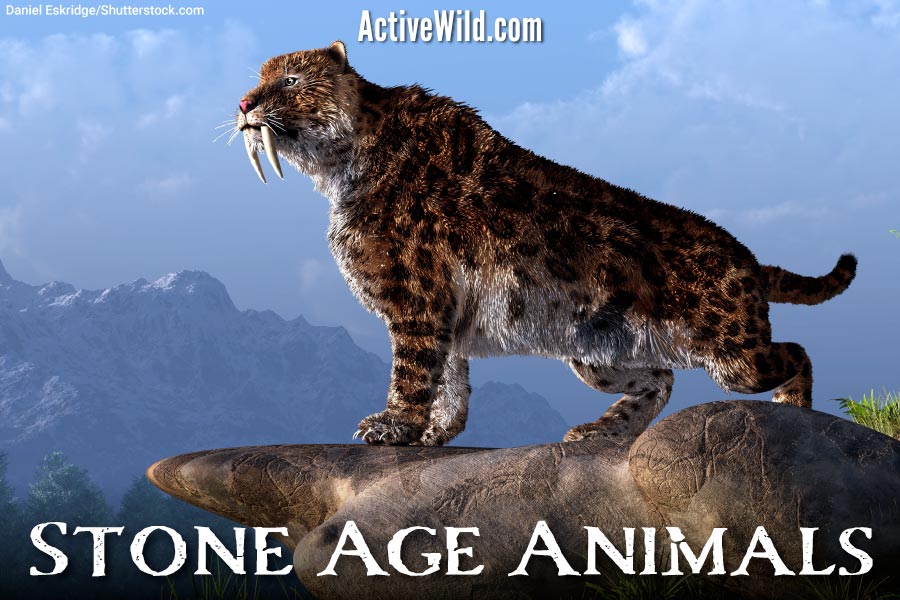



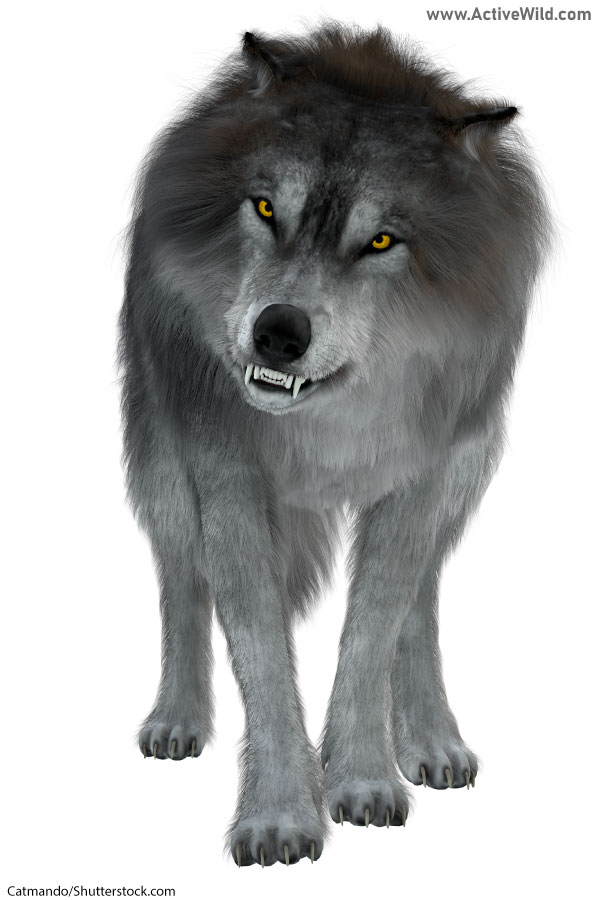

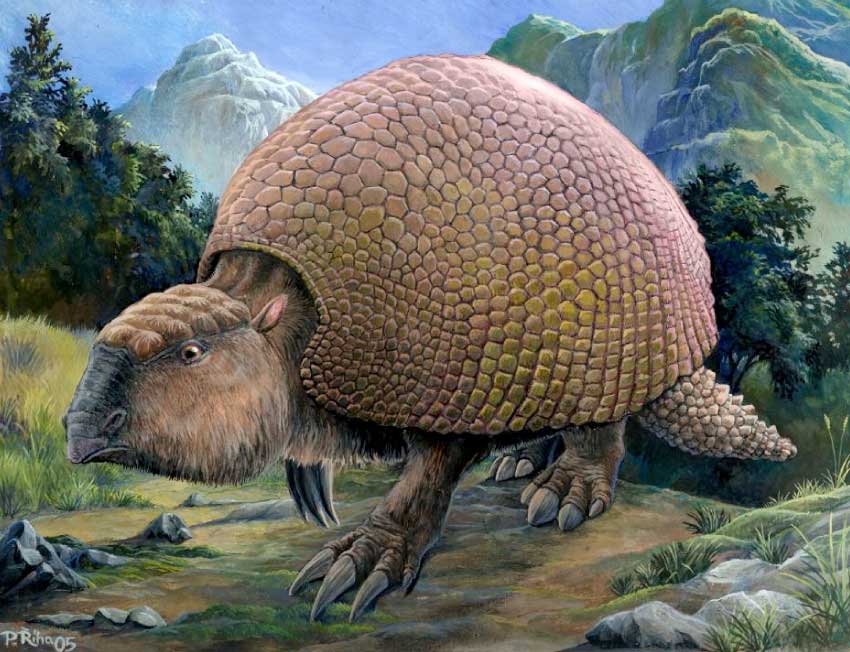
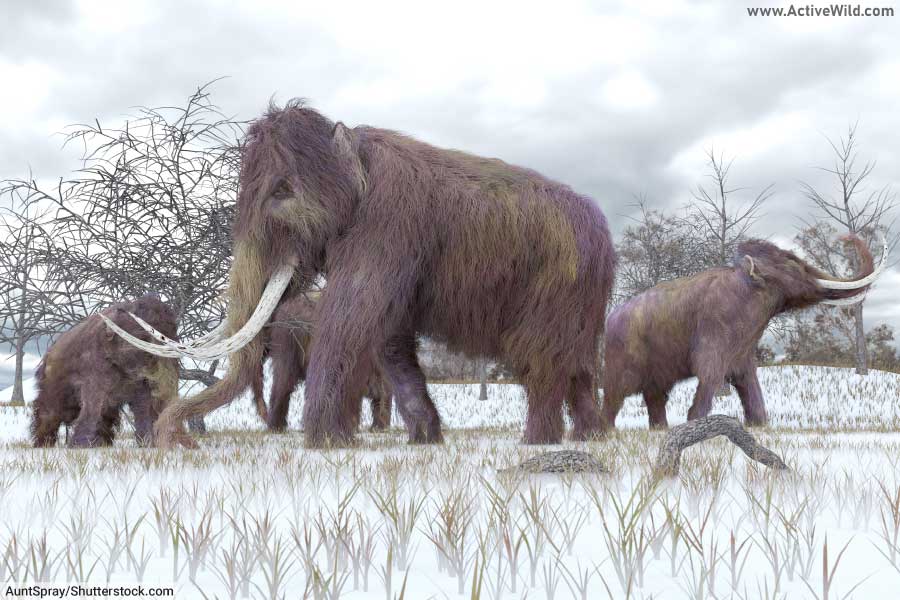
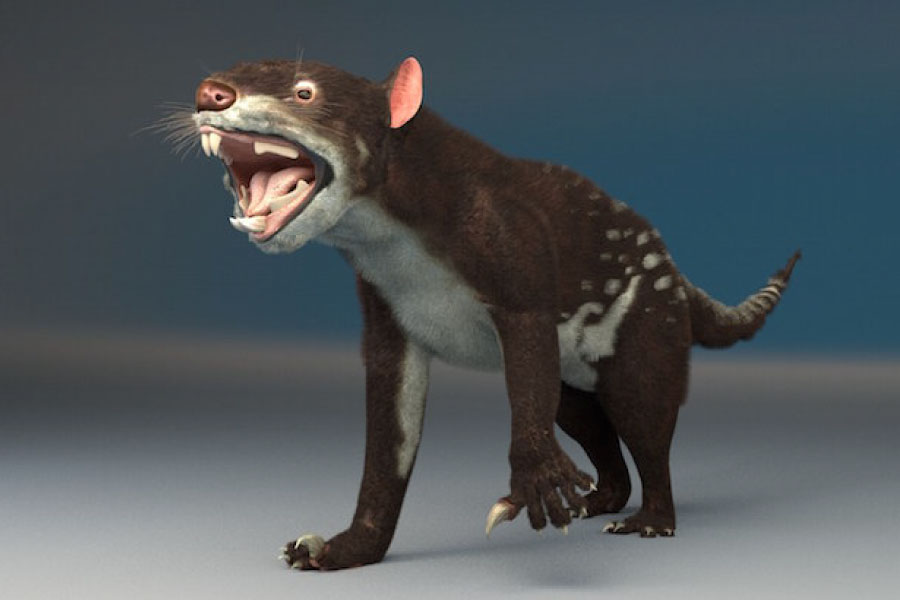
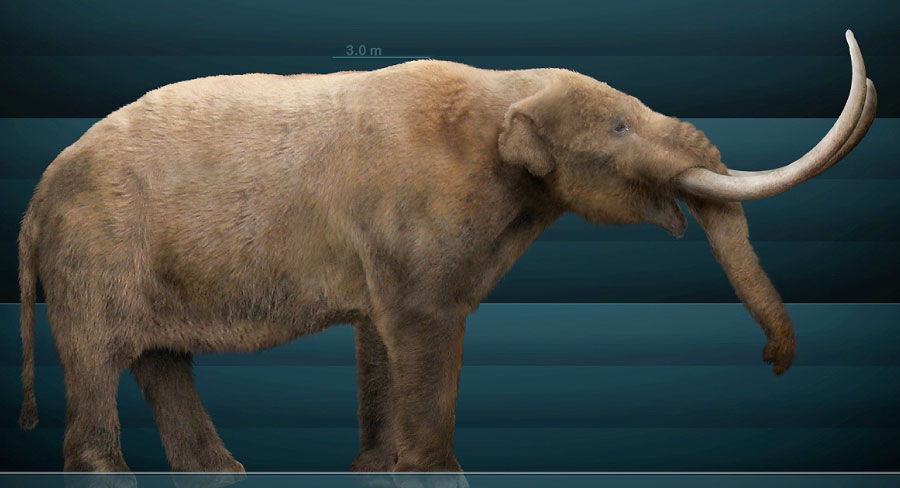
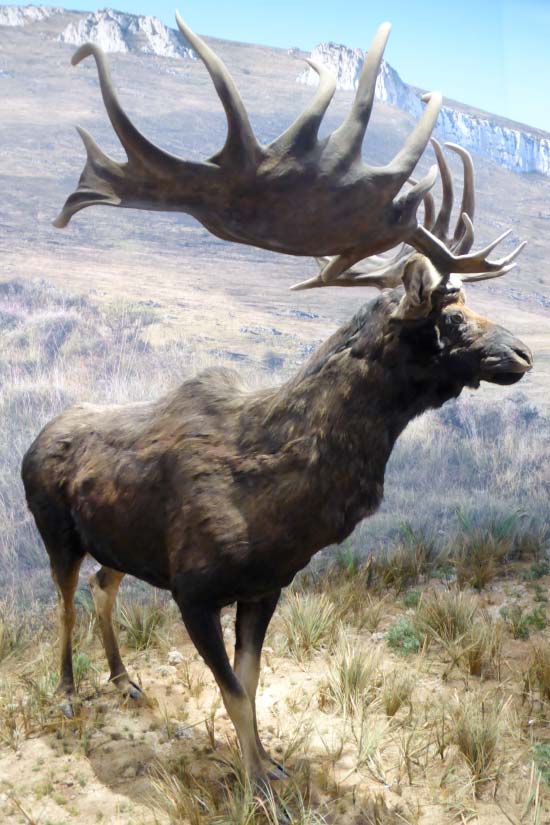


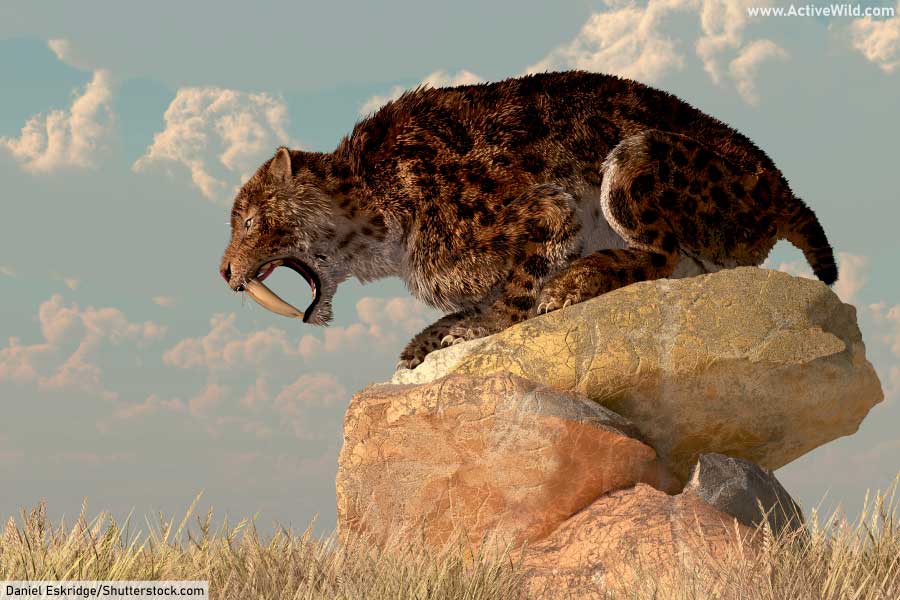



love this site I found a bone in a wash trying to find out what it is. I found it in western Az
👍 Are there any local natural history museums that might be able to help?
don’t forget Andrewsarchus and Fabrosaurus!
Great suggestions, but both of these animals were extinct long before the stone age began!
You can find out more about Andrewsarchus on this page: List Of Prehistoric Animals That Are Not Dinosaurs.
Dont forget the saber tooth tiger
They didn’t forget. That was the smilodon.
Yes, Smilodon is also known as the saber-toothed tiger! 👍
Regards,
The Active Wild Team